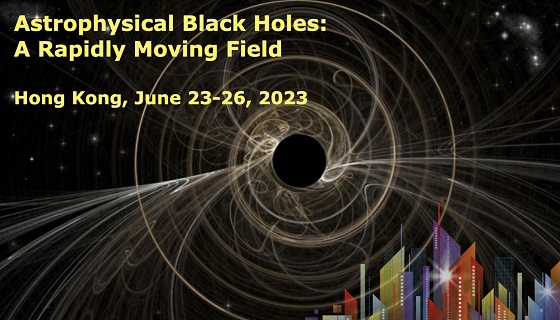Session:- Nuclear transients: TDEs, QPEs, and Changing-look AGNs.1
Theoretical and observational studies of astrophysical black holes have been in rapid development in recent decades. This conference will present major breakthroughs and key remaining questions concerning our fundamental understanding of astrophysical black holes, such as the formation and collimation of relativistic jets, the accretion and growth of black holes, the measurement of black hole spin, the merger of black holes, the first images of black hole shadow, the particle acceleration mechanisms and transient phenomena around black holes, and the feedback from massive black holes to galaxies.
◎X-raying extreme nuclear transients
In recent years, time-domain surveys have revealed new, transient accretion phenomena that defy all predictions. We witness stars getting ripped apart by black holes (known as Tidal Disruption Events) and Active Galactic Nuclei that suddenly accrete material at rates orders of magnitude faster than disk theory predicts. A key to explaining much of this staggering behavior is to probe close to the black hole, as seen in X- rays. In this talk, the speaker will discuss some recent results on TDEs, changing-look AGN and a newly discovered class of transients, Quasi Periodic Eruptions, all of which are furthering our understanding of the extreme accretion environments around supermassive black holes.
時間:2023.06.25(日) 14:00~14:35
講者:Prof. Erin Kara
↓
↓
◎Tidal Disruption Events in XMM-Newton slew survey and some preliminary results of LEIA
Tidal Disruption Event(TDE), where a star is ripped apart by the strong tidal forces of a SuperMassive Black Hole(SMBH), creates an impulse of accretion, resulting in bright flare that decays in time-scales of months to years, thus provides a unique tool to detect dormant black holes and investigate the accretion process around SMBH. The research team and the speaker have built a sample of highly variable X-ray sources, including several TDE candidates, from XMM-newton SLew survey(XMMSL) by comparing their fluxes with that measured in RASS. Here they will talk about the highly variable X-ray sources and a detailed multiwavelength analysis of one TDE which shows brightening in both optical/UV and X-ray band. Besides, XMMSL has similar energy coverage and sensitivity in soft X-ray as Einstein Probe(EP), and the variable content of XMMSL can be used as a reference for the long-term variable and transient sources that EP will detect. An experimental module of the EP-WXT telescope, namely LEIA, was launched on July 27, 2022 and has started its regular scientific surveys since Nov. 2022. In this talk, the speaker will also briefly introduce some preliminary results of LEIA.
時間:2023.06.25(日) 14:35~14:53
講者:Dr LI, Dongyue (National Astronomical Observatories, Chinese Academy of Sciences)
↓
↓
◎Dynamical Unification of Tidal Disruption Events
Tidal Disruption Events(TDEs) were first investigated as theoretical possibilities in the 1970s-1980s, exploring what would happen if a black hole devours an unlucky star. The first detection in 1996 was consistent with the formation of an accretion disk emitting primarily in the X-rays as predicted by theory. However, in recent decades, the situation has become much more complicated. There are now two main classes of TDEs: X-ray and optical-dominated TDEs, and a newly discovered subclass that starts optical bright but steadily increases X-ray luminosity to peak at 10s-100s of days after the optical peak, called X-ray rebrightening.
In this talk, the speaker discusses how we can link these three classes of TDEs to a dependence on the viewing angle and accretion rate of a super-Eddington disk geometry. Specifically, he employs Monte Carlo radiative transfer calculations on 3D general relativistic radiation magnetohydrodynamics simulations of super-Eddington accretion disks. The results of his research team confirm the unified model proposed by Dai et al. (2018), suggesting that the observed emission properties depend largely on the observer's viewing angle. They show as the accretion level declines with the fallback rate, they expect more X-rays to leak out along intermediate viewing angles, providing a natural explanation for the diversity of emission properties observed in TDEs through geometrical considerations
時間:2023.06.25(日) 14:53~15:11
講者:THOMSEN, Lars (The University of Hong Kong)
↓
↓
◎Jetted Tidal disruption events: black hole spin, jet components and circumneuclear medium
A star will be destroyed by tidal forces when it passes close enough by a SuperMassive Black Hole(SMBH). These events known as TDEs are expected to produce luminous flare emission in the UV to X-ray band. The observations of Sw J1644+57, in particular, suggest that at least some TDEs can launch an on-axis relativistic jet. A common speculation is that these rare events are related to rapidly spinning BHs, and the jet is powered by the Blandford-Znajek mechanism. Until now, four on-axis jetted TDEs were detected, i.e., Sw J1644+57, Sw J2058+05, Sw J1112.2-8238 and recently AT2022cmc. The rich obervation data (e.g., X-ray QPOs, radio data etc.) enable us to explore the properties of BH, jet and CircumNeuclear Medium(CNM). In this talk, the speaker will present their constraints on BH spin, jet components and CNM profile.
時間:2023.06.25(日) 15:11~15:29
講者:Prof. LEI, Weihua (Huazhong University of Science & Technology)
↓
↓
地點:香港大學 百週年校園 CPD 3.04 Centennial Campus
語言:英語
是會議作坊,參加者必須登記,2023.04.30 截止
【此屬轉載訊息,以主事單位發佈為準】
此活動由香港大學物理系主辦。
https://astrobh.physics.hku.hk/event/3/timetable/#all.detailed


